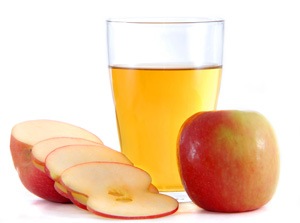We’ve talked about juicing and its proposed health benefits before on Diets in Review in our Beginner’s Guide to Juicing articles ‘How to Make Fresh Juice’ and ‘The Benefits of Fresh Juice.’ And again in our story on the documentary ‘Fat, Sick and Nearly Dead,’ which follows a man on a 60-day, cross-country juice-fast for his health and weight loss. But with so many people singing the praises of this health trend, perhaps it’s time to stop and consider whether or not juicing is a healthy option for everyone.
According to a recent article from USA Today, when done properly, juicing can provide a flurry of health benefits for the vitamins, minerals, and antioxidants it provides. And it encourages us to reach for fresh fruits and vegetables instead of sugary drinks and fattening foods. However, it noted that juicing should not be a long-term diet solution as it doesn’t provide our bodies with all of the food it needs. And that individuals suffering from conditions like diabetes, kidney disease and iron deficiencies are not prime candidates for juicing because of the way it affects the body post digestion.
According to Heather Sylvester, registered dietician at Kennedy Hospital in Cherry Hill, NJ, juicing or juice fasting for those with diabetes could experience drastic spikes in blood sugar levels. For those with kidney disease, high levels of potassium and minerals can build up in the blood to hazardous levels. And for people undergoing chemotherapy, juicing is not recommended because of high levels of antioxidants and low levels of protein.
Our resident RD, Mary Hartley, agreed with these cautions. “Anyone with a medical condition that affects their intake, nutritional status or metabolism (e.g. diabetes), should consult with an RD instead of taking the matter into their own untrained hands. And juicing is never acceptable as the single food that makes up our diet for more than a day or so because it may lack the fiber found in fruits and vegetables since the pulp (ground skins, seeds, etc.) is usually discarded. However, the pulp can be added back into soups, meatloaf, casseroles, etc.”
But the good news? Both Mary and several experts in the article suggested that juicing doesn’t have to be an all-or-nothing type of thing. A healthy way to incorporate juicing into your diet may be making juice for breakfast or substituting it in as a light meal.
Sylvester suggested combining fresh fruits and vegetables with water or ice and no sweeteners. Or for something more balanced, turn your juice into a fruit smoothie by adding low-fat yogurt or skim milk.
Just remember to consult a professional before making drastic changes to your diet. Mary suggests find an RD at eatright.org to see if juicing is a safe choice for you, or if you have other questions specific to your health.
